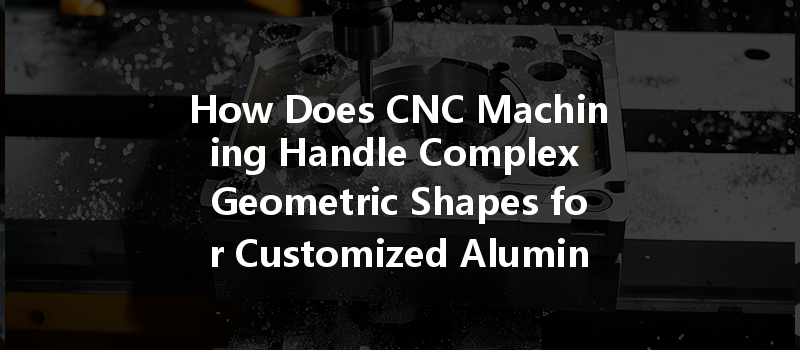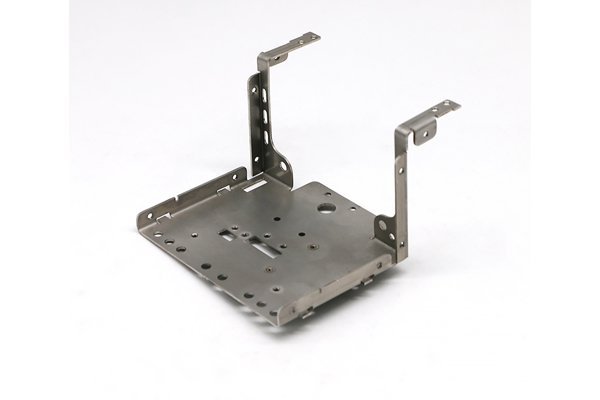Did you know that CNC (Computer Numerical Control) machining can produce intricate geometries with tolerances as tight as 0.005 mm? This level of precision is why industries from aerospace to medical manufacturing are increasingly relying on CNC machining techniques to create customized aluminum parts.
In the world of modern engineering, achieving complexity while maintaining accuracy and efficiency is a daunting task. Luckily, CNC machining offers solutions to handle complex geometric shapes for customized aluminum components that meet the most demanding specifications.
Understanding CNC Machining
Before diving into CNC machining’s capabilities for creating complex geometric shapes, it’s important to understand the fundamentals of the process. CNC machining employs computer-controlled tools to remove material from a workpiece, resulting in the desired shape. The most common machines in this realm include CNC mills, lathes, and routers, which work on different principles but share the same core philosophy: precision automation.
Advantages of CNC Machining
CNC machining comes with several advantages, especially when it comes to creating intricate designs:
Key Technologies in CNC Machining
CNC machining employs several technologies that enable it to handle complex geometries. Understanding each technology aids in realizing how CNC machines achieve precision and efficiency:
The first step in producing custom aluminum parts is 3D modeling. Software tools like SolidWorks, AutoCAD, and Fusion 360 allow engineers to design intricate parts. These models serve as blueprints for the CNC machine, ensuring every detail is captured accurately. The models can also be manipulated to see how different designs would perform functionally and aesthetically before committing to production.
Once a design is finalized, it’s translated into G-code, the machine language that tells CNC machines exactly how to move. Effective tool path programming is crucial for minimizing machining time, reducing material wastage, and ensuring tool longevity. Efficient tool paths for complex shapes often include:
The choice of cutting tools has a profound impact on the ability to machine complex shapes. Using advanced tooling like ball end mills and tapered end mills enables CNC machines to produce rounded and sloped surfaces, which are often required in intricate designs. Selecting the right material for the tools, like carbide or high-speed steel, also contributes to the success of machining operations.
For highly detailed parts, five-axis CNC machining dramatically enhances capability. Traditional three-axis machines can only move along the X, Y, and Z axes, while five-axis machines allow the cutting tool to approach the workpiece from any angle. This versatility means that intricate geometries and complex shapes can be machined in fewer setups, leading to increased accuracy and reduced labor costs.
In some cases, machines that combine both additive manufacturing (like 3D printing) and subtractive machining can be employed. This hybrid approach allows for the rapid creation of highly complex shapes that can then be refined through CNC machining.
Challenges in Machining Complex Geometric Shapes
While CNC machining can effectively manage complex designs, certain challenges still arise. Acknowledging and addressing these challenges is vital for a successful outcome.

One of the primary challenges is ensuring that the cutting tool can access all areas of a complex part. Inadequate access may lead to unfinished surfaces or require extensive rework. Visualizing the tool path during planning can minimize these issues.
Aluminum, while versatile, can warp under certain machining pressures. It’s essential to use appropriate clamping techniques and adjust machining parameters like speed and feed rates to minimize these effects.
Complex geometries often require prolonged cutting durations. Tool wear can impact precision and increase production costs. Implementing a tool monitoring system can assist in maintaining tool integrity and identifying when to replace components preemptively.
Programming CNC machines for complex geometries can become increasingly complicated. Mistakes in the G-code can lead to defects or unusable parts. Testing with simulation software can mitigate such risks before actual machining.
More complex designs, coupled with higher precision requirements, often lead to increased costs. Being transparent about design intentions and keeping communication lines open between designers and manufacturers helps manage expectations regarding potential costs.
Solutions to Overcome Challenges
Now that we’ve identified the inherent challenges in CNC machining of complex geometric shapes, let’s explore effective strategies to ensure high-quality outcomes for custom aluminum parts.
Integrating CAD (Computer-Aided Design) and CAM (Computer-Aided Manufacturing) processes can streamline the design-to-production workflow. A unified platform allows designers and machinists to collaborate effectively, reducing the possibility of program errors and design misunderstandings.
Before full-scale production, creating prototypes of complex shapes can help identify potential issues. 3D printing provides an excellent way to visualize the design and assess its viability for CNC machining, allowing for adjustments before the costly machining phase begins.
Simulating machining operations through specialized software helps visualize the entire process, from material removal to potential collisions. This advanced preparation allows engineers to evaluate tool paths and make modifications as necessary to optimize efficiency and precision.
Establishing a robust tool maintenance program will extend the life of cutting tools and ensure consistent performance. Regular inspections and tool changes help avoid sudden breaks and the associated downtime in production.
The implementation of data analytics can help in understanding process efficiencies. Analyzing data in real-time allows engineers to tweak parameters dynamically while machining, leading to consistent improvement in both quality and efficiency.
Investing in workforce training is critical for success in CNC machining of complex geometries. Comprehensive training programs ensure machinists are proficient with modern tools, techniques, and technologies, enabling them to troubleshoot problems effectively as they occur.
CNC machining has revolutionized the manufacturing industry, especially when it comes to producing custom aluminum parts with complex geometric shapes. By effectively leveraging technologies such as advanced modeling software, five-axis machining, and intelligent programming, manufacturers can address challenges and deliver high-quality components that meet stringent industry standards.
In this blog, we covered essential techniques for managing intricate designs and provided solutions to common challenges faced in CNC machining. The significance of understanding these elements cannot be understated, as they directly impact production efficiency, cost, and the overall success of custom manufacturing ventures.
As industries gravitate towards increased customization and complexity, the importance of CNC machining will only continue to grow. Therefore, investing time and resources in honing CNC capabilities is not merely an option but a vital necessity for staying competitive and meeting rising consumer demands.
Consider this blog a starting point to advance your knowledge on CNC machining and its capabilities, and engage with the conversation of innovation in manufacturing that shapes the future.






